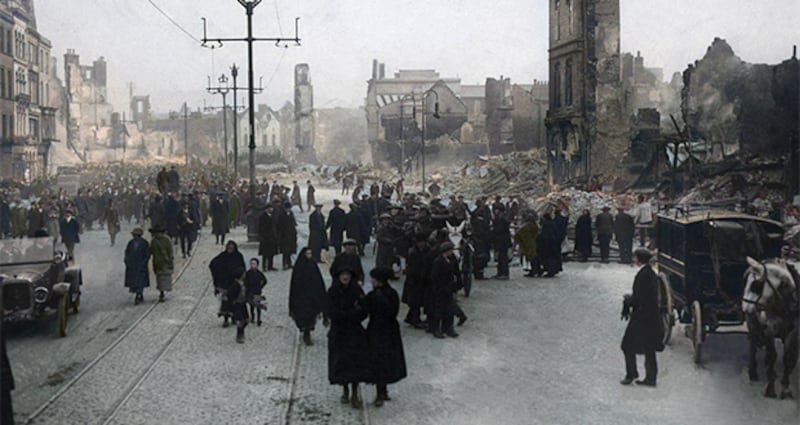Organisation Memo No 1 (1920) was issued by Óglaigh na hÉireann (IRA) General Headquarters (GHQ) on October 4th, 1920. It concerned the formation of flying columns.
“At the present time a large number of our men and officers are on the run in different parts of the country. The most effective way of utilising these officers and men would seem to be by organising them as a flying column,” the memo stated.
“In this way . . . they would become available as standing troops of a well-trained and thoroughly reliable stamp, and their action could be far more systematic and effective.

“Permanent troops of this kind would afford an exceedingly valuable auxiliary arm to the remainder of the Republican Army which is in great measure only a part-time service militia.
“These flying columns would consist of only first-rate troops as the work required of them would be very exacting.”
However, it should be noted that flying columns were already in operation in June 1920, long before the GHQ issued these orders.
Vast distances
Vast distances could be covered by a flying column, who often marched for miles or cycled; bicycles were relatively cheap, light enough to carry over fields, and most importantly a very popular mode of transport (nothing suspicious about a few men cycling).
The duties of flying columns would consist of two distinct types of action, auxiliary and independent.
Auxiliary action meant that brigade commandants would be able to assign the flying column as an invaluable extra force for a local attack in his area. Independent action would comprise attacks on hostile patrols, and raids on postal deliveries and enemy stores.
Flying column commanders had wide discretion but were to keep in contact with local O/Cs to avoid interfering with each other.
Dan Breen recalled that a member of a flying column could always be recognised "not only by the rifle and revolver which he usually carried, and the trench coat, bandolier and leggings which were part of his regular outfit, but also by the razor and toothbrush which he carried after the manner of a fountain pen, standing up in his breast pocket".
Discipline in this matter was very strict; cleanliness was considered essential. A column man with a dirty or unshaven face was unheard of.
Local knowledge
The nature of guerrilla warfare is such that a small number of armed individuals can use their knowledge of local terrain to inflict demoralising blows against a superior army.
The destruction of roads, railways and bridges by the IRA, the thousands of ambushes against the British forces, the effective use of IRA flying columns, the incredibly sophisticated intelligence branch of the IRA all played their part, but ultimately the burning of the Custom House in Dublin in May 1921, war weariness in Britain and a desire to end the violence resulted in the British seeking a cessation of hostilities.
Tom Barry, one of the greatest proponents of guerrilla warfare in Cork if not in Ireland, believed that the "startling upheaval in British policy was due, and only due, to the British recognition that they had not defeated, and could not reasonably hope to defeat in the measurable future, the armed forces of the Irish nation".
Lorcan Collins’s new book Ireland’s War of Independence 1919-21, The IRA’s Guerrilla Campaign is published by The O’Brien Press











